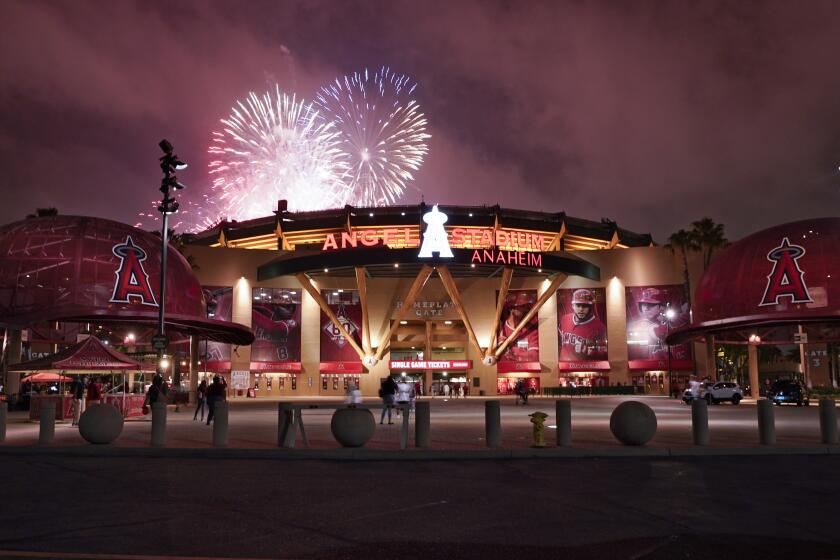Low-scoring Super Bowl LIII draws 98.2 million TV viewers, game’s smallest audience since 2008

- Share via
The lowest-scoring Super Bowl in history turned off fans Sunday, with the matchup between the New England Patriots and Los Angeles Rams drawing the game’s smallest TV audience since 2008.
TV’s most-watched annual event drew 98.2 million viewers, down 5% from last year when 103.4 million viewers watched on NBC, according to Nielsen data.
Counting those who watched the game on streaming platforms, CBS put the total audience at 100.7 million viewers, down 4.5% from the 105.4 million who watched on all platforms last year when the Patriots played the Philadelphia Eagles.
After a year in which more offense and scoring helped boost regular-season ratings, Super Bowl LIII was a defensive battle, with the Patriots shutting down the Rams 13-3. The only touchdown scored came in the fourth quarter, a first in 53 Super Bowls.
Though the tactical contest might have been compelling to serious football watchers, casual fans tend to enjoy higher-scoring shootouts and likely saw Sunday’s game as a snooze-fest. Regular-season ratings for the NFL grew by 5 percent this past season with higher scoring and aggressive offensive play cited most as the reasons.
A widely panned halftime concert featuring Maroon 5 also did not help Super Bowl LIII.
The drop also reflects a major fall in viewership by disgruntled New Orleans Saints fans, who believed their team was robbed of a Super Bowl appearance because of a missed pass-interference call in the NFC championship game against the Rams. The rating in New Orleans was a 26.1 — representing the percentage of homes in the market watching the broadcast. That was the lowest of any major U.S. market Sunday and the lowest all time in New Orleans for a Super Bowl.
CBS, which sold 30-second ads in the game for an average of $5.25 million each, expected Super Bowl LIII to draw more than 100 million viewers.
No Super Bowl had a viewership below that figure since the 2009 game. The size of the Super Bowl audience is not guaranteed to advertisers.
While the play of the game is the likely culprit for the audience decline, it does mark the fourth year in a row in which there has been a decline in viewership for the Super Bowl following a 10-year period in which it grew nine times.
The surge in the Super Bowl audience that occurred between 2006 and 2015 — the year it scored an all-time high of 114.4 million viewers — coincided with the growth of high definition TV that improved the sports viewing experience.
While the size of the Super Bowl audience has declined in recent years, the matchup remains the most-watched TV event of the year by a larger margin than ever as the proliferation of viewing choices has chipped away at most other programs and big events. The Academy Awards telecast, which typically is the most-watched non-sports program of the year, had its lowest audience ever in 2018 with 26.5 million viewers.
CBS said the Super Bowl averaged 2.6 million people on streaming platforms, including NFL.com and CBS All Access — a 29% increase over last year. Commercials on the TV broadcast were also seen on the stream.
The first appearance of a Los Angeles team in the Super Bowl since 1984 did boost ratings in the nation’s second-largest TV market. The 44.6 rating was the highest in Los Angeles since 1996.
Sunday’s contest received a preliminary 41.1 rating nationally. In Boston, the game drew a 57.4 rating.
Twitter: @SteveBattaglio
More to Read
Inside the business of entertainment
The Wide Shot brings you news, analysis and insights on everything from streaming wars to production — and what it all means for the future.
You may occasionally receive promotional content from the Los Angeles Times.











